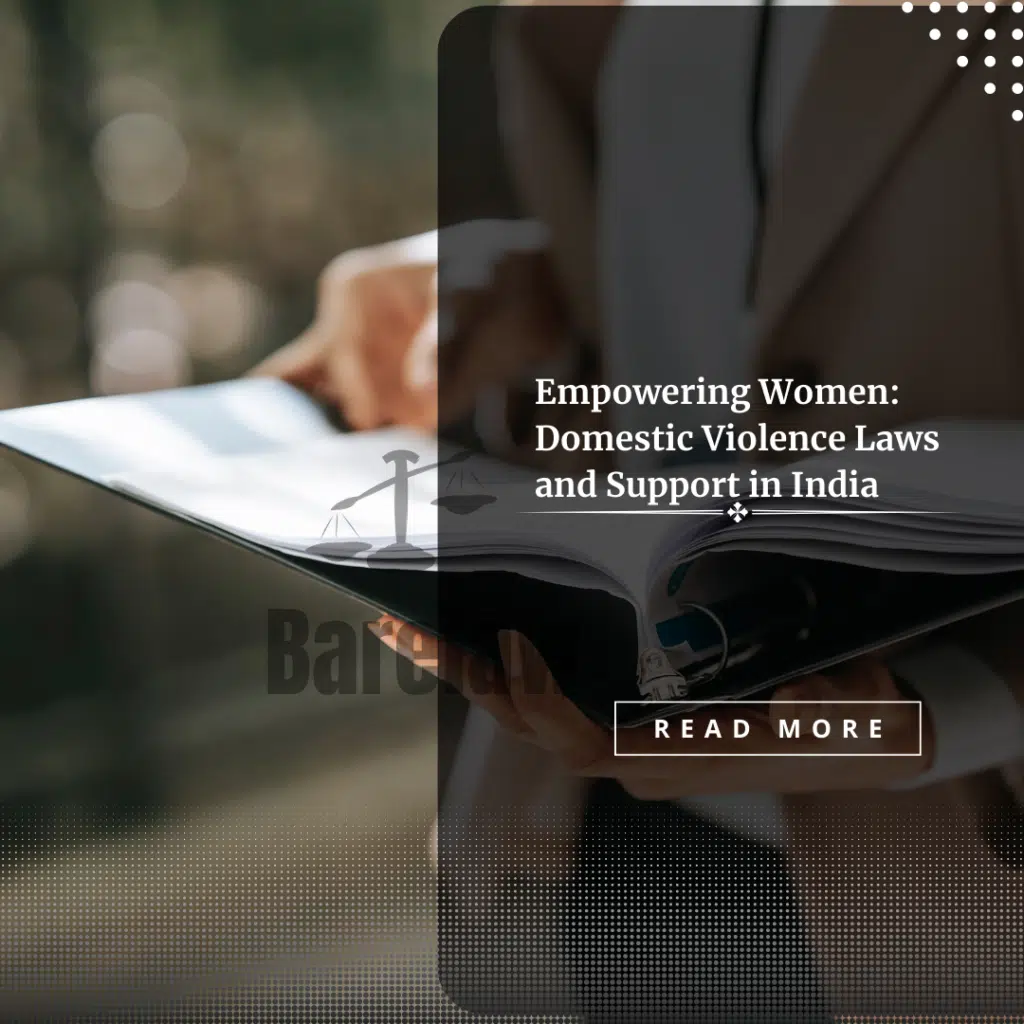
Table of Contents
Empowering Women: Domestic Violence Laws and Support in India
Empowering Women: Domestic Violence Laws and Support in India
Introduction
Domestic violence is a problem that affects countries and cultures worldwide. In India, an all-encompassing legal framework has been established in order to combat this issue which seeks to protect and empower women who are abused by their husbands or other family members at home. This paper will look at Indian domestic violence laws while underlining the importance of legal protection as well as support services for distressed women.
Understanding Domestic Violence Laws in India
The Protection of Women from Domestic Violence Act, 2005 stands as the main legal instrument against domestic violence in India. This law is considered a breakthrough because it recognizes that physical harm is not the only form of abuse but also includes emotional, economic, verbal and sexual abuse among others.
Key Provisions of the Act
The Act provides several essential provisions to safeguard women’s rights:
- Protection Orders: One of the most significant aspects of this act is its provision for protection orders. These court orders are designed to prevent any further acts of violence being perpetrated by an abuser against his victim; they may include directions such as ordering him not to communicate with her or approach her within certain distances etcetera. They serve as immediate safeguards for women facing domestic violence.
- Residence Orders: Another provision under this act allows for residence orders where necessary so that victims can continue living in their shared households while perpetrators are ordered out thereof; it recognizes the value attached to maintaining one’s living conditions and preventing displacement.
- Monetary Relief: According to The Act also grants monetary relief which takes into account financial implications caused by abusive behavior towards someone else’s spouse i.e., medical expenses incurred due hospitalization resulting from injuries sustained during violent attacks; loss-of-earnings suffered because she cannot work outside home etcetera.
- Counseling And Support Services: Finally, besides providing legal remedies, counseling should be available alongside other support services so that victims get holistic help based on understanding that there could have been psychological effects arising from such traumatic encounters.
Legal Protection and Support Services
Not only does the Protection of Women from Domestic Violence Act, 2005 emphasize legal safeguards but also recognizes the need for support services for women facing domestic violence in this country called India.
Role of Protection Orders
Protection orders serve as immediate safety nets for victims. They provide a temporary buffer by ensuring that perpetrators do not come near them or communicate with them at all; these allow them space to seek help without being afraid of what might happen next lest they should meet face to face again with abusers who are still bent on causing them further harm because when someone is violent it means he wants nothing good except hurting others especially those close most vulnerable times like now.
Importance of Support Services
Beyond just providing legal redressal measures, support services play an equally significant role in helping women recover from domestic violence:
- Counseling: Emotional healing is often necessary for any person who has been through emotional trauma occasioned by physical assault meted out upon her body during intimate relationships within marriage setting. Thus counseling becomes very useful where such battered spouses can freely talk about their experiences while addressing various aspects related to their mental well-being towards realization of full recovery potentialities available thereof after having gone through hell fire caused by somebody else’s selfish interests which led them into committing such acts against humanity including themselves.
- Shelter Homes: There may arise situations where it becomes dangerous for a victimized spouse or partner to remain under same roof with his/her violent counterpart hence necessitating creation of shelter homes where these individuals can be accommodated temporarily pending determination concerning future prospects vis-à-vis legal protection this act provides for among other things as mentioned earlier. The places act as safe havens offering secure environments within which affected persons regain stability back into life while undertaking necessary issues connected with personal development besides exploring different options available legally too.
- Legal Aid: Owing to importance attached by law makers towards effective implementation of this legislation; legal aid services must be availed so that victims get enlightened about their rights plus enabling them go through court processes successfully without making wrong decisions on what steps to take next.
- Awareness Campaigns: Public awareness should be raised with regard not only to sensitizing communities about existence or prevalence rates but also educating people on how best they can support efforts aimed at dealing with cases related to intimate partner violence as well as other forms thereof such like child abuse etcetera. These campaigns help debunk myths surrounding these acts thereby creating conducive environment for reporting any incidents encountered within homes thus ensuring offenders face full force justice system which may include incarceration among other penalties provided by law.
Challenges and Future Directions
While the Protection of Women from Domestic Violence Act is a significant step forward, challenges remain:
- Implementation: Inadequate resources, red tape and understanding the law differently by various legal bodies can impede effective implementation of this act.
- Societal Stigma: Society’s perception of domestic violence can discourage women from reporting abuse. Continuous sensitization and teaching is required to deal with this matter.
- Access to services : Sometimes getting hold of support systems and legal aid may not be easy especially in far flung areas or among marginalized groups. There should be more done to ensure that such help is available everywhere.
Conclusion
The Protection of Women from Domestic Violence Act, 2005 represents India’s effort towards empowering women and fighting against domestic violence. Apart from setting protection orders; it also recognizes support services as key components for victims’ survival within its legal framework. However, much work still needs to be done on making sure that there is proper execution, solving challenges as well as changing societal attitude towards domestic violence. By enacting laws that safeguard the rights of women facing abuse while creating safe spaces for them through provision networks across different parts of the country India is indeed taking giant steps in this regard.



